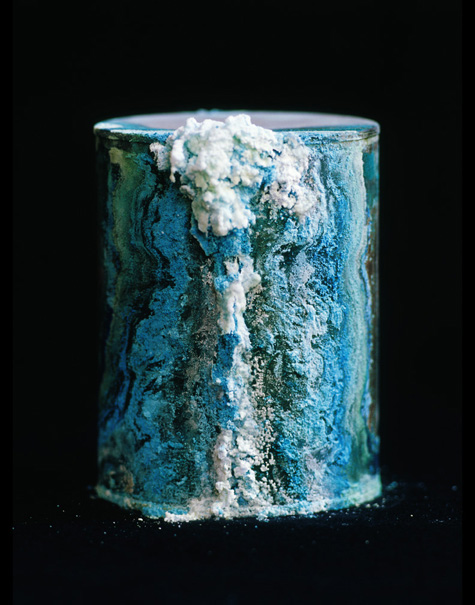 Note 1.
Note 1. In the paper,
Public Monuments, from Alan Sonfist's contribution to
Artful Ecologies, University College Falmouth, 2006, pp 9-10, the artist reiterates some of his ideas from the late 60's. Specifically, he suggests that a city should erect public monuments to commemorate the natural systems that they replace. We are all familiar with memorial statues, plaques, monoliths, commemorative parks and gardens, even symbolic trees. But these are usually placed in recognition of significant human events such as wars, adventures, political careers, lives spent in service of the poor or perhaps the prior existence of an important civil building or the residence of a respected citizen. Sonfist wishes for monuments to be made for nature. Why not place a reminder of a river that has been lost? A copse of trees to commemorate a forest that was axed?
Note 2. A monument is, by definition, something that aims for the permanence of stone. The ancient Egyptians had this idea and it has been dominant right through the Greek and Roman periods, the Middle Ages and Renaissance right up until the present day. The art of sculpture took until the 20th century to overcome its obsession with monolithic forms carved from stone or cast in bronze (See Herbert Ferber,
On Sculpture, 1954). On human time-scales these massive works are sturdy yet... Andy Goldsworthy remarked when observing the stone about him (documentary,
Rivers and Tides, 2000), that where it has bent and buckled in its molten form, or where it has crumbled and decayed through weathering to be returned to dust and recycled by the same processes that created it, it is easy to see that even stone is fluid. A geologist works with this same fluidity on a massive scale. A rock climber recognises stone's seams and pockets, bubbles and streams at the macro level. Yet humans are short-lived and physically weak so of course stone is for us a powerful symbol.
Note 3. A planted tree has an immensity, power and above all a dignity about it that a stone monument can never have. A tree, like us, has a beginning and an end, even if these are thousands of years apart. A tree also has the active force of any organism. A tree makes a lovely symbol without the arrogance of stone. The tree retains its own identity even when used as a symbol. A stone's identity is stripped when it becomes a monument.
Note 4. The act of scratching a person's name into a cut stone as a long-term reminder of their existence, presence or passing is ancient. Have such cuts been made in
living trees for as long? What is the first evidence for the practice?
(Examples: the Dig Tree in Queensland has become an icon due to the unique set of circumstances surrounding its carving. The Sister Rocks near Stawell in Victoria are an indication of just how arrogant and ugly people can be.)
Image credit: picture from Wikipedia of the (ugly!) stone monument in Royal Park to commemorate
Burke and Wills' expedition departure in 1860 from the site.
 The rain has brought the fungi. The diversity of those living in our small patch of garden and nearby is extraordinary! Most recently discovered is an Earthstar (Geastrum pectinatum) right outside the front door. A round shell of tissue splits open along lines of longitude forming a multi-pointed star with a spherical centre that (apparently) contains the spores. I am waiting for rain drops to cause this to explode in a puff.
The rain has brought the fungi. The diversity of those living in our small patch of garden and nearby is extraordinary! Most recently discovered is an Earthstar (Geastrum pectinatum) right outside the front door. A round shell of tissue splits open along lines of longitude forming a multi-pointed star with a spherical centre that (apparently) contains the spores. I am waiting for rain drops to cause this to explode in a puff.













